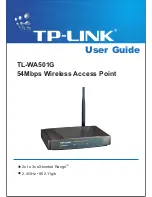
different
communication
protocols,
data
formatting
structures,
languages,
and/or
architecture.
HT mode
In
the
802.11n
system,
two
new
formats,
called
High
Throughput
(HT),
are
defined
for
the
Physical
Layer,
Mixed
Mode,
and
Green
Field.
If
a
system
runs
40
HT,
two
adjacent
20
MHz
channels
are
used.
The
larger
40
MHz
bandwidth
can
provide
better
transmit
quality
and
speed.
Keys
Like
passwords,
keys
open
(decrypt)
and
close
(encrypt)
messages.
While
many
encryption
algorithms
are
commonly
known
and
public,
the
key
must
be
kept
secret.
Local
‐
Area
Network
(LAN)
A
small
data
network
covering
a
limited
area,
such
as
a
building
or
group
of
buildings.
Most
LANs
connect
workstations
or
personal
computers.
LANs
let
many
users
share
devices
such
as
printers
as
well
as
data.
LANs
also
facilitate
communication
through
e
‐
or
chat
sessions.
Media
Access
Control
(MAC)
Address
Address
associated
with
every
hardware
device
on
the
network.
Every
802.11
wireless
device
has
its
own
specific
MAC
address.
This
unique
identifier
is
hard
‐
coded
into
the
device
and
can
be
used
to
provide
security
for
WLANs.
When
a
network
uses
a
MAC
table,
only
the
802.11
radios
that
have
their
MAC
addresses
added
to
that
network's
MAC
table
can
access
the
network.
Network
Address
Translation
(NAT)
An
Internet
standard
that
lets
a
LAN
use
one
set
of
IP
addresses
for
internal
traffic
and
a
second
set
of
addresses
for
external
traffic.
Network
Time
Protocol
(NTP)
A
protocol
that
lets
devices
synchronize
their
time
with
a
time
server.
NTP
uses
TCP
or
UDP
port
123
by
default.
Passphrase
A
text
string
that
automatically
generates
WEP
keys
on
wireless
client
adapters.
Power
Over
Ethernet
(PoE)
A
PoE
provides
power
to
PoE
‐
enabled
devices
using
an
8
‐
pin
CAT
5
Ethernet
cable,
eliminating
the
need
for
a
power
source.
Preamble
Synchronizes
transmissions
in
a
WLAN.
The
preamble
type
defines
the
length
of
the
Cyclic
Redundancy
Check
block
for
communication
between
a
device
and
roaming
wireless
stations.
Protected
Extensible
Authentication
Protocol
(PEAP)
Authentication
protocol
of
IEEE
802.1x
used
to
send
authentication
data
and
passwords
over
802.11
WLANs.
Quality
of
Service
(QoS)
A
network’s
ability
to
deliver
data
with
minimum
delay.
QoS
also
refers
to
the
networking
methods
used
to
provide
bandwidth
for
real
‐
time
multimedia
applications.
Remote
Authentication
Dial
‐
In
User
Service
(RADIUS)
Networking
protocol
that
provides
centralized
authentication,
authorization,
and
accounting




































